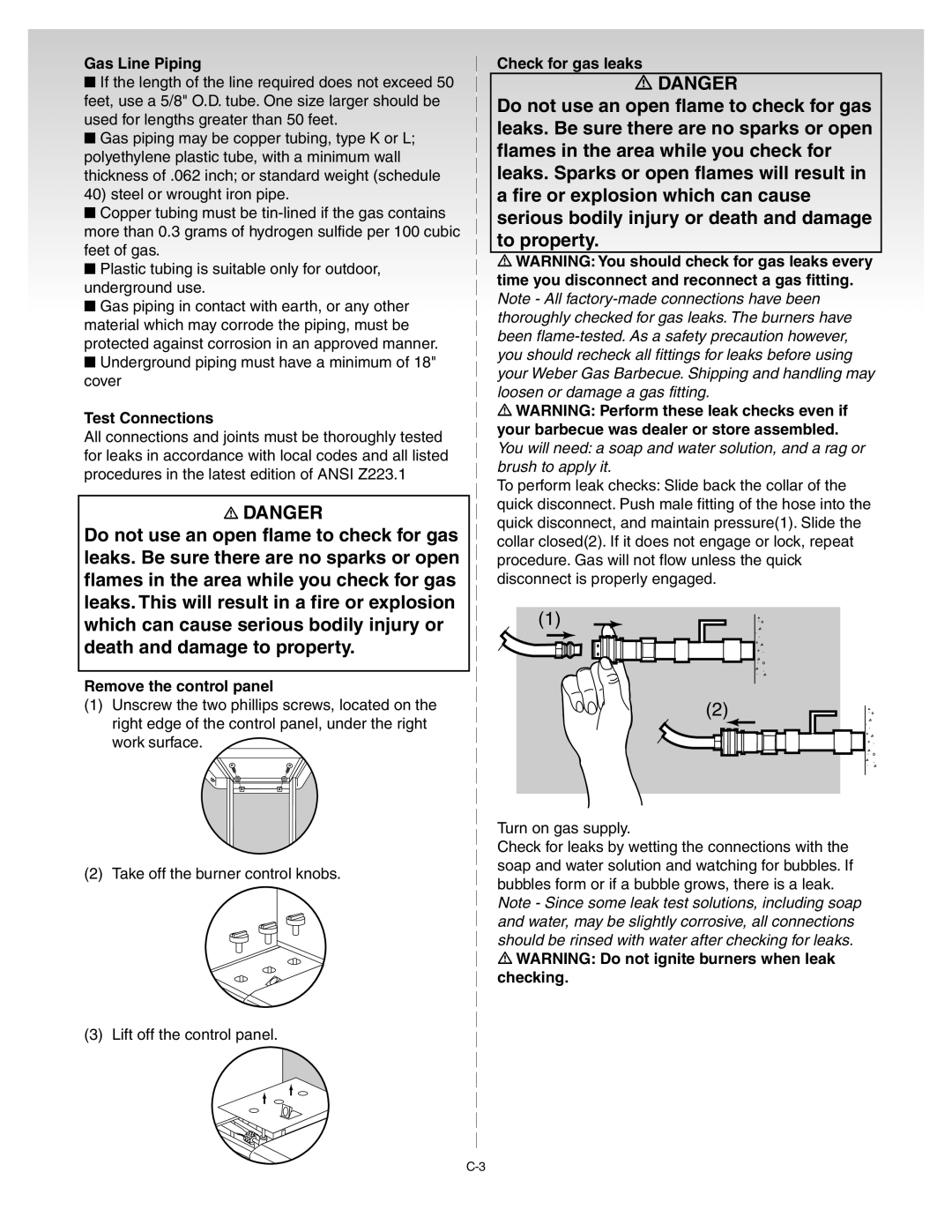
Gas Line Piping
■If the length of the line required does not exceed 50 feet, use a 5/8" O.D. tube. One size larger should be used for lengths greater than 50 feet.
■Gas piping may be copper tubing, type K or L; polyethylene plastic tube, with a minimum wall thickness of .062 inch; or standard weight (schedule 40) steel or wrought iron pipe.
■Copper tubing must be
■Plastic tubing is suitable only for outdoor, underground use.
■Gas piping in contact with earth, or any other material which may corrode the piping, must be protected against corrosion in an approved manner.
■Underground piping must have a minimum of 18" cover
Test Connections
All connections and joints must be thoroughly tested for leaks in accordance with local codes and all listed procedures in the latest edition of ANSI Z223.1
DANGER
Do not use an open flame to check for gas leaks. Be sure there are no sparks or open flames in the area while you check for gas leaks. This will result in a fire or explosion which can cause serious bodily injury or death and damage to property.
Remove the control panel
(1)Unscrew the two phillips screws, located on the right edge of the control panel, under the right work surface.
(2) Take off the burner control knobs.
(3) Lift off the control panel.
Check for gas leaks
DANGER
Do not use an open flame to check for gas leaks. Be sure there are no sparks or open flames in the area while you check for leaks. Sparks or open flames will result in a fire or explosion which can cause serious bodily injury or death and damage to property.
WARNING: You should check for gas leaks every time you disconnect and reconnect a gas fitting. Note - All
WARNING: Perform these leak checks even if your barbecue was dealer or store assembled. You will need: a soap and water solution, and a rag or brush to apply it.
To perform leak checks: Slide back the collar of the quick disconnect. Push male fitting of the hose into the quick disconnect, and maintain pressure(1). Slide the collar closed(2). If it does not engage or lock, repeat procedure. Gas will not flow unless the quick disconnect is properly engaged.
(1)
(2)
Turn on gas supply.
Check for leaks by wetting the connections with the soap and water solution and watching for bubbles. If bubbles form or if a bubble grows, there is a leak.
Note - Since some leak test solutions, including soap and water, may be slightly corrosive, all connections should be rinsed with water after checking for leaks.
WARNING: Do not ignite burners when leak checking.
